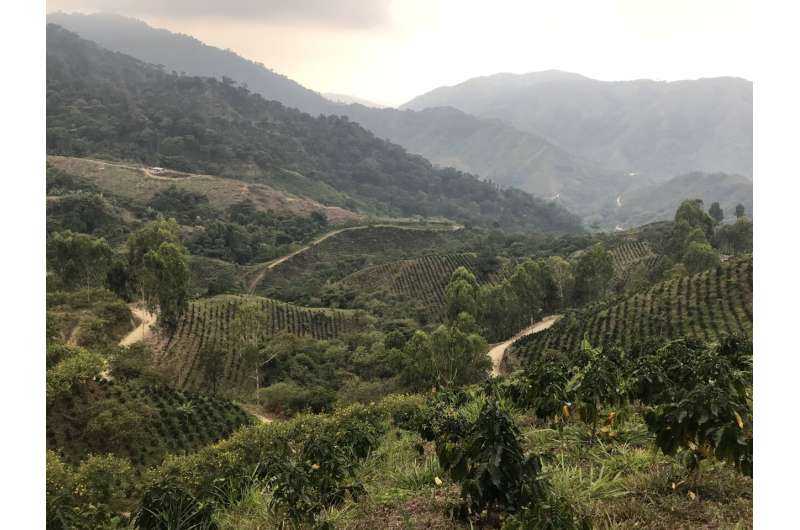A new study finds that two conservation strategies provide complementary benefits to native birds found in coffee-growing regions. Setting aside forest conserves more forest specialists and breeding birds while growing coffee under a shade tree canopy protects more generalists and nonbreeding birds. Bird communities in forests and coffee plantations in the Sierra Nevada de Santa Marta, Colombia (pictured) were surveyed for this study. Credit: Jonathon Valente/Smithsonian
A new study, published in Biological Conservation, finds that two conservation strategies provide complementary benefits to native birds found in coffee-growing regions. Setting aside forest conserves more forest specialists and breeding birds, while growing coffee under a shade tree canopy protects more generalists and non-breeding birds.
These findings have direct implications for Smithsonian's Bird Friendly coffee certification program and other biodiversity conservation initiatives. The results validate forest conservation and shade tree management as complementary biodiversity strategies, with both being required to conserve the full bird community across a coffee-growing landscape.
In addition to protecting more birds, coffee certification standards that incorporate both strategies can offer greater flexibility and incentivize participation from more coffee producers. By incorporating both approaches into the Bird Friendly certification standard, the program will further its impact while honoring and advancing the important conservation science behind the certification, which was founded over 30 years ago.
More information: Jonathon J. Valente et al, Land-sparing and land-sharing provide complementary benefits for conserving avian biodiversity in coffee-growing landscapes, Biological Conservation (2022). DOI: 10.1016/j.biocon.2022.109568
Journal information: Biological Conservation
Provided by Smithsonian National Zoological Park























